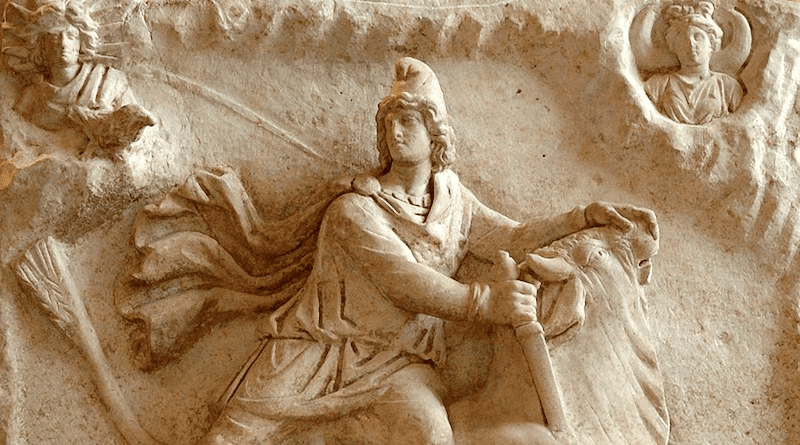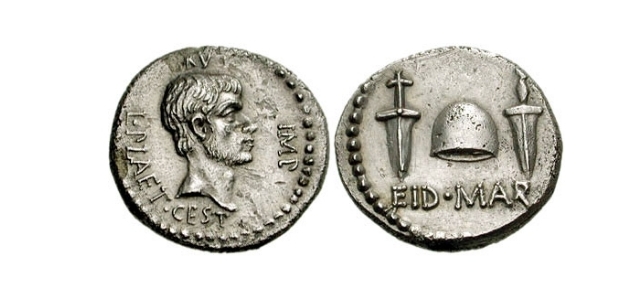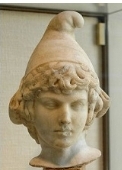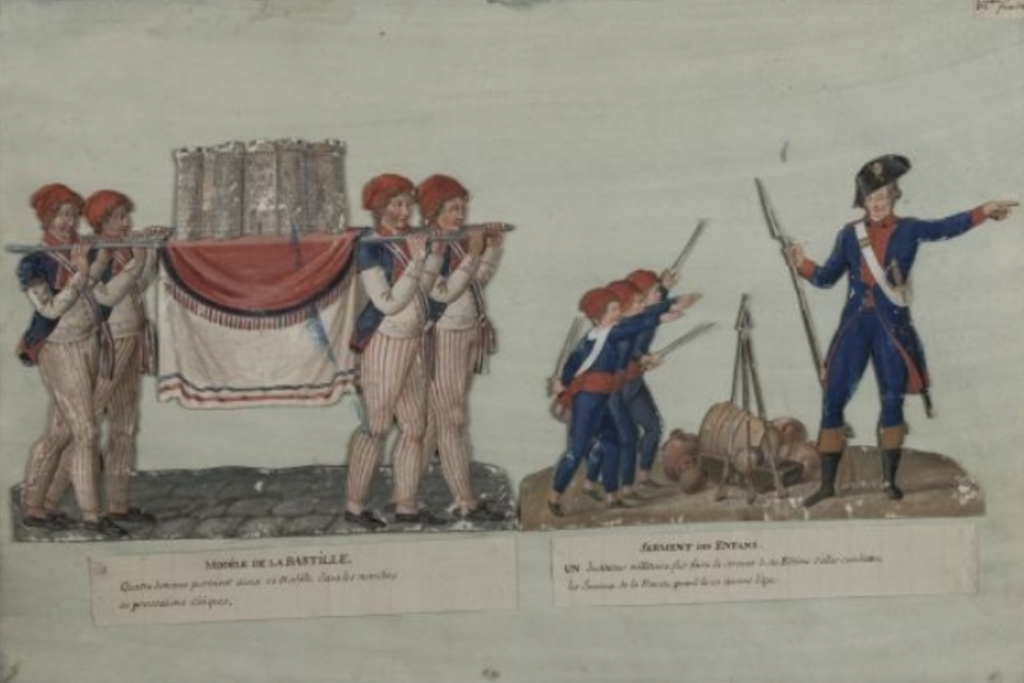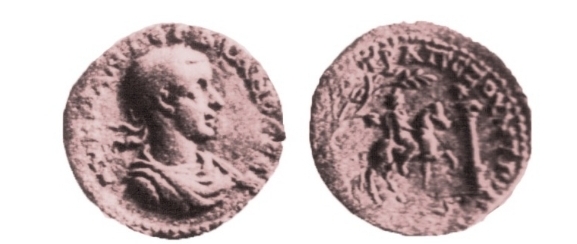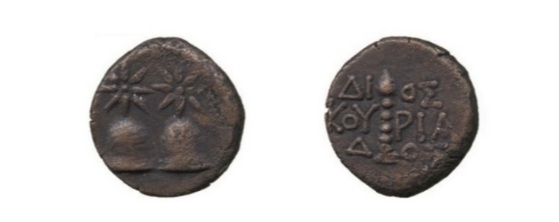Liberties And Phrygian Caps In Georgia
By Prof. Dr. Tedo Dundua and Dr. Emil Avdaliani
The idea of liberty has long been connected with red Phrygian or “liberty” caps (soft felt or wool conical headdress).
Though the use of the caps is mostly associated with the examples from ancient Rome, protest against taxation in the reign of Louis XIV or the French Revolution, there are some examples from the history of ancient Georgia, namely Colchis.
Phrygian caps were in usage for millennia, as evidenced by their representation on the coins from the ancient world from Rome to Colchis.
The central figure on the reverse image of the coin below is a pileus, a cap of emancipated slaves in Rome, i.e. symbol of liberty. Following the assassination of Caesar, M. Iunius Brutus used this symbol to declare end of the tyranny.
The figure to the left wears a Phrygian cap, associated in antiquity with several people, like Phrygians, Dacians, Thracians etc.
The featured figure above this article is Mithras, the Graeco-Roman god of Persian origin, god of the sun, light and justice, in a Phrygian cap. That means as follows: pileus was often confused with Phrygian cap, latter also becoming a liberty cap.
The French Revolution, in its turn, maintained this confusion, taking the Phrygian cap as a symbol of liberty.
Below again is Mithras as a equestrian on the municipal copper coins of bilingual (Graeco-Colchian/Western Georgian) Trapezus under the Roman rule. He wears a Phrygian cap (T. Dundua and Others. Online English-Georgian Catalogue of Georgian Numismatics. 2013-2015 http://geonumismatics.tsu.ge/en/catalogue/types/?type=26)
The municipal copper coins of Dioscurias in Colchis (modern Sokhumi, Western Georgia) with the effigies of Dioscuri’s caps and thyrsus can been seen below. Typologically the coins are connected to the municipal copper coins of Pontus – obverse type is taken from Amisus’ coins, issued in 120-111 B.C., and reverse type is borrowed from municipal numismatics of South and North Black Sea coasts, from the coins struck in 105-90 B.C.
Coins issued in Dioscurias should be undoubtedly dated back to the end of 2nd c. B.C. and the beginning of the 1st c. B.C. Accordingly, Mithridates VI, king of Pontus, annexed East Black Sea coast exactly in those times. Dioscurians, now subjugated to Mithridates, restored their diminished municipal structures, and struck their own copper money with the “caps of liberty”. Still, Mithridates’ garrison was located in Dioscurias and the official appointed by him controlled the mint (T. Dundua and Others. Online English-Georgian Catalogue of Georgian Numismatics. 2013-2015 http://geonumismatics.tsu.ge/en/catalogue/types/?type=22).
Thus, like everywhere in Europe, in Georgia (Colchis and Iberia) the Phrygian caps meant liberty.
This article was published by Georgia Today

